Growing up I had two options for easily portable fishing poles. A pocket fisherman or a stick pole. A stick pole is literally a small stick wrapped with a fishing string and a hook tied at the end. I really like fishing but often on vacation bringing my fishing pole was not an option. Especially when flying to the destination.
Some of my best memories are catching fish on a simple stick pole. However, lots of big fish got away because let’s face it a stick pole is terrible fishing gear. The lure can not be cast and there is no drag. Some people use plastic hand reels but having an actual fishing pole is a much better option.
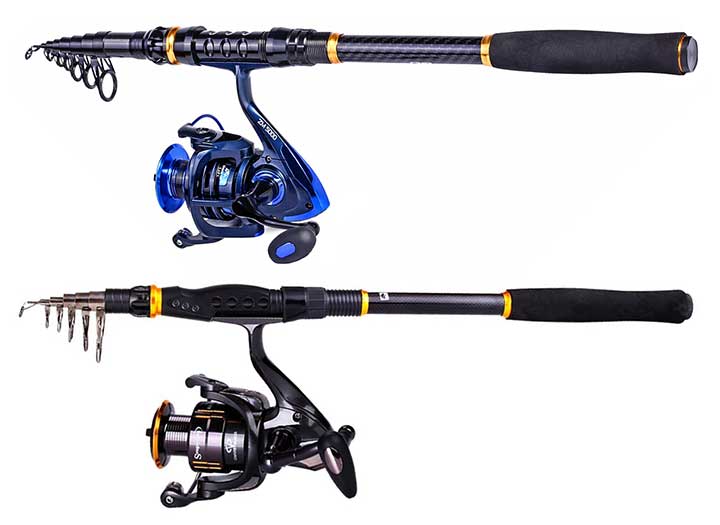
Telescopic fishing rods are not typically heavy-duty rods set up to catch huge fish. However, adding a high-end reel to a telescopic fishing rod will enable the pole to catch large hard fighting fish. I have seen people in Florida on vacation that literally saw the base off two-piece fishing poles so they can fit them in there luggage. Other people just bring the reels and get cheap one-time use poles at the destination.
Telescopic fishing poles are great to take hiking and camping to catch bass, crappie, walleye, and trout in lakes and streams. It is also great to take on vacations near the ocean to catch sharks, tarpon, and salmon.
One tip when using a telescopic rod is to expand the pole from the tip. When collapsing the pole twist and pull down each section also starting near the tip.
The best option for traveling with fishing gear is to get telescopic fishing poles. These rods are small enough that they can be kept in your vehicle all the time. Collapsible fishing rods also make great gifts allowing people to get excited about all the fish they are going to catch.
Here Are The Best Telescopic Fishing Rods
1. Bass Pro Shops Quick Draw Telescopic Combo

| 5 Foot Rod |
Line-capacity (yd/lb) 110/4 |
| Drag 4.6 pounds | Retrieves 18 in/turn |
| 6 Foot Rod |
Line-capacity (yd/lb) 160/8 |
| Drag 5.8 pounds | Retrieves 21 in/turn |
| 6 Foot 6-inches Rod |
Line-capacity (yd/lb) 170/10 |
| Drag 11 pounds | Retrieves 23 in/turn |
Bass Pro Shops has their own telescopic fishing rod called the Quick Draw. The rod comes in three lengths from 5-foot to 6-feet 6 inches. Each rod length comes with a different size reel. The collapses length of the rod is less than 24 inches. The plastic on the front of the rod is just used to hang the rod when selling them. It comes off and stays off when using the rod and reel. Last time I was at Bass Pro Shops I saw these at it seemed like a good combo for freshwater fishing. The rod will work for saltwater fishing but the reel does not have sealed ball bearings. This means it would not hold up over time in a saltwater fishing environment.
For stream and trout fishing the 5 foot rod spooled up with 4 pound line in a good way to go. For freshwater bass fishing a 6 foot 6-inch rod is what I prefer to use. It casts far and allows for a good hook set. In general you are better off with a one piece or two piece rod. However when traveling and backpacking a telescopic rod is very convenient and allows you to have the gear when you need it. Bass Pro Shops also has the Aventure1 telescopic rod in a spinning model and casting model for a baitcast reel. It comes with just the rod rather than as a combo.
2. Profishiency Telescoping Micro Combo

The Profishiency micro combo is only 18-inches in length when collapsed. This is a great all around freshwater setup to use when traveling. It comes pre-spooled with 160 yards of 6-pound fishing line. This is thin enough line to catch trout and is thick enough line to catch bass. It is ideal for catching small bass, crappie, perch, and bluegill.
The combo also comes with a small tackle box with pliers, hooks, sinkers, and three lures. Having a pliers and extra lures is important when fishing. When backpacking it is not likely you can bring a full tackle box so this small kit if very handy. The rod is only 5-foot in length so expect a fun light tackle experience.
3. Zebco 33 Telescopic Spincast Combo

The Zebco 33 spincast reel is the basic reel that most kids learn how to fish with. To cast all you need to do is push the button and fling the lure. The normal size reel has 10 pound line and the micro reel has 4 pound line. This means the rod does not need to be super beefy. However when fishing in local ponds, lakes, rivers, and streams it is a perfect size. It works well to catch bluegill, sunfish, perch, bass, catfish, and trout. Most of the time a small setup like this will get the job done.
The rod length when extended in either 5-feet or 6-feet. When collapsed the rod length is 19-inches for the 5-foot and 22.5 inches for the 6-foot extended length version. This is perfect for placing in a backpack or keeping in the trunk of a car. Their is also a triggerspin reel option that is good for kids transitioning from a spincast reel to a spinning reel.
4. Zebco 33 Telescopic spinning Combo
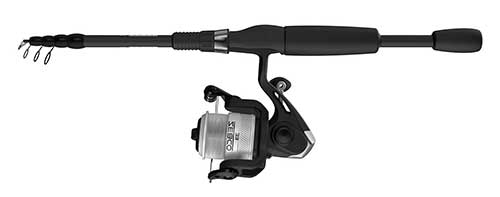
Zebco is known for their spincast reels but also make average quality spinning reels. There are two reel options for this combo. The 6-foot rod comes with a reel spooled with 215 yards of 8 pound monofilament line. The 5 foot rods comes with a smaller reel that holds 200 yards of 4 pound line. For pond and lake fishing the larger reel is better when targeting bass, pickerel, and catfish. When fishing in streams and rivers the four pound line is good for creek chubs, small bass, and trout.
The 6-foot rod collapses to a length of 20 inches for travel. While the ultralight 5-foot rod it collapses to a length of 19-inches. This rod and reel combo is intended for freshwater use. The rod itself will work well in saltwater due to the EVA handle and grips. It would be a good idea to get a different ultralight reel that is saltwater rated when fishing in the ocean.
5. Plusinno Carbon Fiber Telescopic Combo
The rod is available in the following four size configurations: 6 feet, 7 feet, 8 feet, and 9 feet and collapse into sizes between 17 inches and 18 inches. There are two packages you can choose from, one with the rod and reel and one with the rod and reel combo with a carry case and a bunch of extra goodies as well.
The rod is constructed from high-density carbon fiber that allows it to have much better sensitivity than the fiberglass competitors and is extremely lightweight. All the hardware is stainless steel to ensure it is saltwater safe and you get the traditional EVA foam handle.
The reel you get is an average low-cost spinning reel. It is alright for light fishing but if you are going to be going for big saltwater fish swapping out the reel would be a good idea. The rod will only take so much force so having smooth drag will allow for larger fish to be caught.
The Pulsinno retractable rods are certainly a good choice for anglers looking or an basic telescoping fishing rod. They are fun to use, offer lots of versatility in a very small collapsible package, and are offered at a reasonable price.
6. Okuma Spinning Travel Kit
The Okuma travel kit comes with a 6-foot 5 piece travel rod. Also included is a size 20 Voyager reel and custom travel case. The rod is light action and has a cork grips and durable ceramic eye inserts. The reel is made by Okuma, has a ball bearing drive system and a one-piece anodized aluminum spool.
This setup is not technically telescopic but does serve the same purpose of being compact and used when traveling. The sensitivity, rod weight, and balance are just like a standard one-piece or two-piece fishing rod. This is a great setup to use for most types of freshwater fish like trout, bass, pickerel, crappie, etc.
7. KastKing Blackhawk II
There are two types of rods available, spinning and casting. Casting models are for baitcasting reels that are primarily used for bass fishing. When fishing for bass and freshwater species with a spinning reel the standard spinning type rod is best.
The spinning type model means the poles are for spinning reels. There are freshwater spinning reels and saltwater spinning reels. These rods are available in 8 different lengths from 6.5-feet to 8-feet and have multiple flexibility levels. For large ocean fish like tarpon, the inshore spinning high power would be a good option.
The Blackhawk II uses a graphite constructed rod with floating line guides and a high-density EVA foam handle. The floating line guides are near the front of the rod to allow extra line support near the tip. Most of the guides are fixed like a normal telescopic fishing rod.
The soloscopic performance technology (SPT) essentially means its a six-piece telescopic rod with similar attributes to a single-piece rod. It has similar line performance, full-length power transition, and extremely high sensitivity levels.
This rod is good for beginners and experienced anglers. With so many rod options available there are great rod types for everything from bass fishing to surf fishing.
In the review below the Blackhawk fishing rod will be discussed. This was for the original Blackhawk spinning fishing pole.
The review showed that this rod works well for surf and shore fishing. Even when using high-end spinning reels the rod was able the handle heavy dray and was stiff enough to cast large weights. Lighter casting models also work great in freshwater.
Options for this rod include spinning rods and baitcasting rods. The baitcasting rod is awesome for a travel fishing pole for freshwater fishing and you can see a detailed review of the baitcasting rod below. It does not come with a baitcasting reel but you can just use any reel you have on your other baitcasting rods.
8. Daiwa Megaforce Telescopic Fishing Rod
The Daiwa Megaforce comes in lengths of 6.89 feet, 7.86 feet, 8.86 feet, and 11.81 feet. Transport or collapsed length of this rod is 24.8 inches. The rods handle is made of both cork and EVA material. The carbon fiber shell of the rod allows it to be lightweight and balanced when casting. Guides on the rod are made with a durable titanium oxide material.
There rod’s actions are rated based on the casting weight of the lures. Casting weight options include .28-.88 ounce, .70-2.10 ounce, 1.41-3.17 ounce, and 3.52-10.58 ounce. I would look at these as the suggested max lure weights. Obviously, a very stiff rod can cast a 1/16 ounce jig but the flexibility and sensitivity of the rods are just not ideal for this light of a lure.
This is a higher-end telescopic fishing rod that is of higher quality than most on the market. The sensitivity of the lightweight actions matches that of one-piece rods. The heavier actions allow for a durable, stiff and strong rod that can cast heavyweights from the shore. If you are a serious fisherman and plan to use a telescoping rod frequently, this is a great option.
9. Eagle Claw Pack-It Telescopic Fishing Rod
This eagle claw is 5.5 feet in length. The collapsed length is about 18 inches. This is a classic telescopic fishing pole that has been around for a long time. You can get this pole with a reel included for about $10 more. Small trout size reels go good with this rod.
The good thing about this rod is that it is lightweight and great when backpacking long distances. It is a pole that will work well for catching trout, bass, and panfish.
The rod is constructed from the typical fiberglass materials you’d expect to find on most of these rods and it comes with a decent EVA foam handle. Guides are ceramic and the pole comes with a one-year warranty.
10. Sougayilang Carbon Fiber Telescopic Fishing Rod
The Sougayilang rods come in lengths of 5.9 feet, 6.9 feet, 7.9 feet, 8.9 feet, and 9.8 feet. The collapsed lengths range from 18.5 inches to 27.6 inches. The reel is a YB3000 series that will work well to catch most freshwater fish and saltwater fish up to around 10 pounds. Braided fishing line and some basic tackle is included. The carry case is optional and is a lower cost without it.
The rod is made with high-density carbon fiber and fiberglass. Guide rings are ceramic with the guide inserts being made with aluminum oxide. The base grip of the rod is made with EVA which is found on many saltwater spinning rods. This is a good setup for freshwater or saltwater. The longer poles are especially good for surf fishing.
The video below shows the 9-foot version of this pole being used in a pond.
11. Troutboy Black Warrior
Troutboy combo rods come in seven different sizing options which are 5 feet 10 inches, 6 feet 10 inches, 7 feet 10 inches, 8 feet 10 inches, 9 feet 10 inches, and 11 feet 10 inches. All models collapse down to a range between 18.8 inches to 26.3 inches.
They also come with different levels of flex and since they’re all carbon fiber, they have excellent sensitivity. Most of the rods are medium-heavy action. The short rods are great for bass fishing and larger rods are great for casting far out while bank or surf fishing.
These rods can come with or without spinning reels. The telescopic rods without a reel is a really great value for a quality pole. The extra cost for the reel is because the reel is of better quality than most combo reels. Size of the reels range from ZM3000 -ZM-5000 which follows the normal thousand series size convention for spinning reels.
12. Goture Sword
The telescopic fishing rod offered by Goture has length options for just about every type of fishing. Length options for this rod are 6 feet 10 inches, 7 feet 10 inches, 8 feet 10 inches, 9 feet 10 inches, 10 feet 10 inches, and 11 feet 10 inches.
These rods are constructed from E-glass, fiberglass, and carbon fiber. E-glass is a type of glass that softens instead of melts and acts similarly to fiberglass. E-glass is used often as a reinforcement fiber in the production of fiberglass. This rod is primarily made of carbon fiber with fiberglass reinforcement for extra strength and durability.
Furthering its durability is triple welded stainless steel line guides with ceramic rings. These are a bit heavier than other ceramic guides but they do seem to be extremely durable and capable of withstanding heavy lines.
With all of the emphasis on extra durability, this rod is a bit heavier than most on this list. However, I would also expect it to be one of the toughest. They also used a bunch of corrosion-resistant hardware such as the aluminum reel seat, making this rod great for beach fishing in the ocean. The handle is made with the standard EVA foam.
13. Leo Sports Telescopic Fishing Kit
There are several length options you can choose from including 5 feet, 6 feet, 7 feet, or 8 feet. These rods collapse down to sizes from 13 inches to 17 inches. The rod is constructed of a mixture between carbon fiber and fiberglass and encompasses an EVA foam handle and porcelain guide rings.
This little kit offered by Leo is for novice anglers and kids. It pretty much has everything you need to get started including the rod, a spinning reel, some lures, 300 feet of line, hooks, and a nice Leo carry bag to stuff it all into. The carry bag is a great way to transport the rod and reel and stay organized with lots of tackle. Getting additional fishing tackle will probably be needed depending on what type of fish is being targeted.
The rod is constructed of a very nice looking high-density carbon fiber and fiberglass mixture. These types of rods are purpose-built to provide a happy medium between durability, flexibility, and sensitivity. Attached to the rod are multi-colored piano porcelain guide rings. This is a nice small combo for catching fish like bass and crappie.
14. Wakeman Telescopic Spinning Rod Combo
The Wakeman Ultra series is an excellent 7 feet 2-inch carbon fiber rod and collapses into roughly 18 inches. This package includes the rod, spinning reel, and a carry case with foam cutouts. Constructed of fiberglass with an EVA foam handle and is available in three different color schemes. Color options include metallic, black, and tan.
Also included is a convenient carry case with molded foam packaging. Carry bag dimensions are 19.5 inches x 8.5 inches x 3.0 inches.
The reel that comes with it is a single bearing spinning reel with a 5.2:1 gear ratio. The reel probably will not last for years but this package is nice because it stores easily in the travel back for easy transport. This is a good setup for catching typically freshwater fish like bass, panfish, and perch. This would make a great fishing gift as it works for traveling or local fishing.
15. Wild Water Compact Fly Fishing Rod and Reel
Telescopic rods do not have a long, light action rod that is sensitive enough to work well when fly fishing. However many fly fishing rods break down into a similar size as a collapsed telescopic rod. This is because it is not uncommon for fly fishermen to travel with their gear. Also, it is common for these fishermen to hike long-distance in search of remote streams full of trout or salmon.
The Wild Rater is a 5/6 weight rod that is 9 feet in length and breaks down into 4 sections that are each 28 inches. The total rod weight is old 4.4 ounces. The rod case is 32 inches in length and has a pouch for the reel.
The diameter of the reel is 85mm. It comes spooled with a backing line and leader which means that it comes ready to fish. Orange 20 pound backing line is placed on the spool first. Then the reel is topped with a yellow floating fly line. Reels can easily be changed from left-handed reeling to right-handed reeling.
A total of 9 files that are size 14 come included in the package. These files include 3 winged black ant, 3 gold ribbed hare’s ear, and 3 parachute Adams.
A 5/6 flyweight rod is best suited for trout, grayling, panfish, and bass. A flyweight of 6-10 is best for larger fish like salmon and steelhead. When targeting big game fish like tarpon a flyweight of 10-14 is typically used.
16. Short Trolling Rod Two-Piece
Now we are going to talk about a very common problem when it comes to traveling and wanting to do some serious fishing. What if you want to catch really big fish or rent a boat and want to troll. Spinning tackle is just not what you want for either of these situations. The solution is to get short two-piece conventional rods or a telescoping rod case.

The Fiblink offshore heavy trolling rod is 6 feet in length and breaks into two pieces. Heavy-duty roller guides are at each eye including the tip.
The construction of the rod is with E-glass graphite blanks. Corrosion-resistant machined aluminum is used for the reel seat. Hand and foregrips are made with EVA foam and the butt of the rod gimbals. This rod comes with a 1-year warranty.
Without a truck traveling with one piece rods is very difficult. Yes I have done it but it is less that ideal. In my mind I always want a one piece rod and then fish for months with a two piece rods and do not even realize that they are two piece.
Having a rod that can hold a large conventioal reel is needed when trolling offshore an when targeing big fish. If you want to catch big sharks, goliath grouper, mahi-mahi, tuna, wahoo etc you are going to need a conventional rod and reel setup. Even if you are trolling for walleye, striped bass, or salmon you are going to want to be using convention fishing reels and poles. In these cases having a telescoping rod case is the way to go.
Plano Airliner Telescoping Rod Case
This case is 47 inches in length and can extend to 88 inches in length. The tube diameter is 4.5 inches. It can store around 8 rods that are 7 feet in length. The number of rods it will hold will obviously vary depending on how much space each rod takes up.
Traveling with conventional rods allow for trolling gear to be brought while traveling to catch fish like mahi-mahi and tuna.
Designed to protect the gear during airline travel the case is made of hard-sided plastic. The case has three tiers so it does not need to be fully extended when holding short fishing rods. A carry hand is incorporated into the case. The case could be easily modified to have a carry strap if that is desired.
Having a case like this is a must when bringing lots of fishing gear on an airplane. This might seem excessive to some people but not a die-hard fisherman. Would I rather stand next to the ocean or would I rather be fishing in the ocean? I would rather be fishing and have adequate gear to catch any fish that comes in the area.
Penn Squall Trolling Reel
The Penn Squall Lever drag two-speed reel comes in sizes of 16vs, 30vsw, and 50vsw. The drags are 26 pounds, 32 pounds, and 40 pounds respectfully. This reel is made of graphite which makes it lightweight and corrosion-resistant.
This is one of the best big game reels on the market even when not traveling. I always like having a least one 50 class reel on the boat spooled up to catch whatever big fish might be found. A 30 class reel is suitable to catch almost any fish except large sharks, large tuna, wahoo, marlin, or swordfish.
The two-speed system easily shifts from high to low speed by pressing in the large gold button. It shifts from low two high by twisting to release the button. Most of the time the reel is kept at high speed. I only use low speed when cranking up large bottom fish like halibut.
17. Shakespeare Youth Fishing Kit
The Mickey pole is 2 feet 6-inches in length. A push-button reel is used and the handle is made of EVA foam. The rod is specifically designed for small children. This reel has been updated to include an easy to hold round reel handle and thumb button extension for easy casting.
The reel comes spooled with a lightweight monofilament fishing line. The reel can also be spooled with a braided line. Because these poles use a lightweight fishing line around 3 pounds it often gets more bites that poles setup with heavy lines. It is humorous and fun when the Mickey pole catches large fish that are too big for kids to reel in. Although not technically telescopic at 2 feet 6-inches it meets the criteria of a fishing rod that is easy to transport and travel with.
What is a Telescoping Fishing Rod?
In easy terms, a telescoping fishing rod is a fishing rod whose pieces fall down into each other to be stored and carried in an extremely small package. They are comprised of multiple sections that fall into each other, down to either the handle or one section before the handle. When deploying, you simply pull out the rod and it will extend into roughly what’s close to a full standard fishing rod, without the hassle of needing to deconstruct the rod or try and fold it up to put it in your car.
Most telescoping fishing rods are constructed of fiberglass or graphite (carbon) and contain much of the same attributes you’d expect to find in a regular fishing rod such as eyelets, an action trigger, etc. Sometimes you’ll see this in sets that contain a telescoping fishing rod and a reel suitable for the rod, but you’ll also find just the rod itself as well, allowing you to choose basically any reel you want.
Anglers generally use telescopic fishing poles for small freshwater fishing, however, if you buy one of decent quality, you could, in theory, use these for just about anything, even saltwater fishing! Just like normal fishing rods, there are several categories of telescoping fishing rods to choose from for different styles and types of fishing.
Other names for these are folding fishing rods (there is another category of rods called folding rods that actually fold, but some people call what I’m talking about a folding rod too), collapsing or collapsible fishing rods, portable fishing rods, or slidable out fishing rods. These are all generally the same and the market for these tends to use multiple different names.
Since telescoping fishing rods collapse into less than a quarter of their uncollapsed size, they make perfect fishing rods for those of you who are biking, driving ATVs, taking a flight, or backpacking to your fishing destination. They can easily fit in a backpack, large suitcase, and I’ve even seen some people ride a bicycle with them in their pant pockets! Furthermore, if you’re low on space, such as living in a small studio apartment or living out of an RV, telescoping fishing rods will certainly be much easier to store than a standard fishing rod.
Telescopic fishing rods are also popular among surfers and paddle boarders as they allow easy transport out into the depths for some quick fishing.
Telescopic Fishing Rods Versus Traditional Full-Size Fishing Rods
When comparing a telescopic fishing rod to a traditional rod, you’re essentially deciding on tradeoffs between performance and convenience. Telescopic rods can be easily collapsed and taken just about anywhere, with easier storage and more options to carry them. Most telescopic rods can collapse into roughly a 2’ long package which is much easier to transport than a full 8-10’ fishing rod!
Like most things in life, convenience comes at a price. Telescopic rods have several joints where they could incur breakages and failures whereas a full-size rod may not have as many and are typically much stronger. This also means that a telescopic rod doesn’t allow for as much flex and bending as a traditional rod.
Furthermore, traditional rods generally have much better quality and/or larger eyelets and more feature-rich handles. Since the whole idea behind engineering a telescopic rod is to create the smallest form factor possible, there are several tradeoffs, such as smaller and lighter components and the inability to use some materials due to the construction of the rod. Furthermore, the fishing experience to a trained eye may be drastically different.
Comparing a telescopic fishing rod to a traditional fishing rod to most people would likely yield very little difference, but putting them into the hands of a seasoned angler would result in immediate observations in behavior. Probably the most prominent attribute is the action. Due to the multi-piece construction of a telescopic rod, you’ll lose a great amount of sensitivity and some claim this may result in missed sets.
While the durability of the telescopic rod may be lower while extended compared to a full-size fishing rod, when you collapse them, they’re extremely durable! This makes sense, as you’re basically compounding the strength of each section when you push them inside each other. Ever broken a rod while falling down a steep bank? That likely won’t happen with a collapsed rod!
Obviously, the market for telescopic capable fishing rods is much smaller than that of traditional fishing rods. With that said, this means there is a much smaller selection and an ever smaller amount of choices when it comes to high-quality rods. Prices for well built telescopic rods tend to be much higher than that of an equivalent high-quality traditional rod. If you’re buying one just to have one as a novelty, though, you can find some extremely cheap ones just to try out and have around for fun.
Since pretty much anything with moving parts is bound to incur degradation over time, telescopic rods can become damaged in a way that ruins their collapsing ability. If one of the rod sections develops a crease or gets bent, you may not be able to collapse it ever again. To make matters worse, dirt and dust can accumulate in between the sections where it’s hard to see and even harder to clean, making the collapsibility rough and inconsistent.
Lastly, if a piece starts to corrode and rust, that will also lower its ability to collapse properly. You should be cleaning all of your fishing equipment regularly, but telescopic fishing poles may require a bit more attention than your average fishing rod.
Is a Collapsible Fishing Rod Right For You?
Many people straight up ask me whether or not they should buy a telescopic fishing rod and to be frank, I don’t have a “one size fits all” type of answer. There are many factors and attributes you would need to consider and I think whether or not a specific style of fishing rod fits you is really up to you and your personal preference.
At the end of the day, there are tradeoffs as we spoke about in the previous section, however, an experienced angler, even with the lower level of sensitivity should be able to catch roughly the same amount of fish with any rod. Some people argue that the rod itself makes all the difference, and although there is some merit to that, I just don’t think the difference is large enough to tell people telescopic fishing rods are awful.
I think if you’re someone who needs the telescopic portability of a rod you should give it a fair chance. After you get used to one, I think you’ll see the differences in sensitivity are minimal, but still, there are differences. If you have to have the absolute best of everything because being a fishing enthusiast with the best gear is your thing, then you should probably stay away from telescopic fishing rods.
There is always the option of having both. Why not? I have both and have had both for a very long time now. I know people who usually fish 90% of the time with their full size 10’ rod but every now and then they simply don’t feel like jamming that pole into their vehicle and they just quickly grab the telescopic rig instead.
My recommendation here isn’t to live or die by a specific type of fishing rod but rather try and use multiple different setups to find the one that’s right for you. Remember, there are many options among all styles of rods, so don’t make your judgment based on just one rod in that category but rather try and use a wide range of options to make sure you like or dislike that specific style. I’ve gotten to try some really terrible telescoping rods that, if I had only ever tried them, I would hate telescopic rods, but I’ve also been fortunate enough to test run a few that have performed incredibly well.
What to Look For When Shopping For a Telescopic Rod
Just like pretty much everything in life, you get what you pay for, so before setting out specific expectations, you’ll need to figure out a budget. You can get your hands on a telescopic fishing rod for as little as $12 if that’s what you want to do and you can also spend several hundred bucks.
If you’ve got a little money to play with, I’d recommend looking at something in the $50-$80 range. Those usually consist of a level of quality that gives you a good idea if using this type of rod is something you’d be interested in without going overboard and spending a lot on a rod you’re not sure about. On the flip side, yes, you can get a telescoping rod for under twenty bucks, but those are hit or miss and usually give up a lot to be offered at that price range, whether it be in quality, durability, experience, or all three.
You can find telescopic fishing rods primarily in either fiberglass, carbon (graphite), or perhaps a mix of the two. Either one isn’t exactly better, but more so just different and you can usually find each of those at every price range, so it really comes down to personal preference. Cheap aluminum and thin steel rod materials are not worth buying and once they bend, they are damaged forever.
Between carbon and fiberglass models are some distinct differences. Carbon fiber rods are usually lighter and more sensitive due to it’s enhanced ability to flex. This also translates into better vibrations and an overall better user experience when it comes to fishing species such as crappie and bluegill since you’d likely be using soft bait and they hit rather lightly.
As a general rule of thumb, but not always, fiberglass takes the cake when it comes to durability and heavier species. Don’t get me wrong, there are some pretty tough carbon fiber rods on the market that can handle some good fights, but the general consensus is that fiberglass is stronger and better suited for larger fish such as walleye or pike.
Aside from the rod material, you’ll also need to consider components. The rod guides or eyelets need to be up to the task at hand. Rod guides constructed of ceramic are usually the best as they are both lightweight, low-profile, and decently durable. The lighter your rod guides are, the better the sensitivity of the entire setup.
Handles are often chalked up as a personal preference by most people and usually, I agree. So long as the handle isn’t going to get damaged easily by the sun or by being wet, it comes down to what you personally prefer.
For me, I like EVA rod handles because they seem to hold up the best in my experience. Cork falls apart, regular plastic is just cheap, and aluminum gets hot and slippery. If you find the rod you want but it doesn’t have your preferred handle, you can always buy grip tape and/or grip cord and some models allow you to change out the handle.
Since we’re buying a telescopic fishing rod for its convenience and small form factor, it makes sense to go with a cork handle. Cork is generally lighter than EVA and cork also tends to have a lower damping effect, which means increased sensitivity.
Telescopic Fishing Rods Versus Telescopic Fishing Poles
Many people use the term “rod” and pole” interchangeably, and although in a normal conversation this may not matter too much when it comes to buying something to fish with, it matters a lot. This guide is focused on telescopic fishing rods, so I won’t talk about poles too much but I want to make sure you know the difference because if you shop around, you’ll likely see both and sometimes the marketing copy used for them is incorrect, leading you to buy the wrong one.
Since I don’t want to go too deep into this, I’ll give you a very quick rundown of the differences. A fishing rod is constructed out of non-natural materials such as fiberglass, graphite, carbon fiber, etc. A fishing pole is constructed out of something natural, such as bamboo, reed, cane, wood, etc.
Another difference is that a fishing rod has eyelets that run up the length of the rod while a fishing pole usually only has a loop at the top of the pole for the line. There are more differences the deeper you get into this topic, but for the most part, that’s a basic explanation that should help guide you through muddy waters so to speak in commerce.
There are not many options for telescopic fishing poles. Many listings will include “pole” in the description for the people searching that term or the people that don’t know the difference. At the end of the day, stick to searching for telescopic fishing rods, as almost all of these will be constructed from something that poles are not.
Captain Cody has worked on charter fishing boats in the Florida Keys, Virgin Islands, and Alaska. Growing up in Pennsylvania Cody has also done extensive freshwater fishing including bass fishing tournaments. Cody strives to provide detailed information about the best fishing gear and tactics to help both novice and experienced anglers have a more productive and enjoyable time on the water. Cody also has a background in aerospace engineering and neuroscience but really only takes pride in being good at one thing and that is fishing!

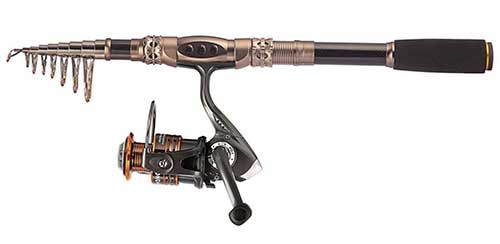
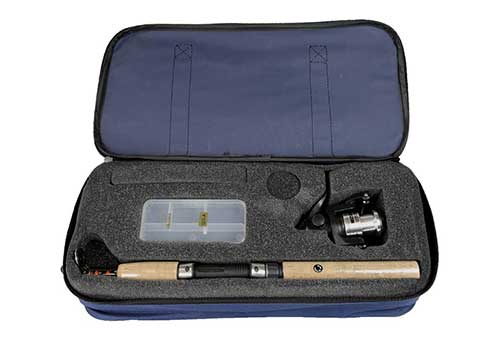



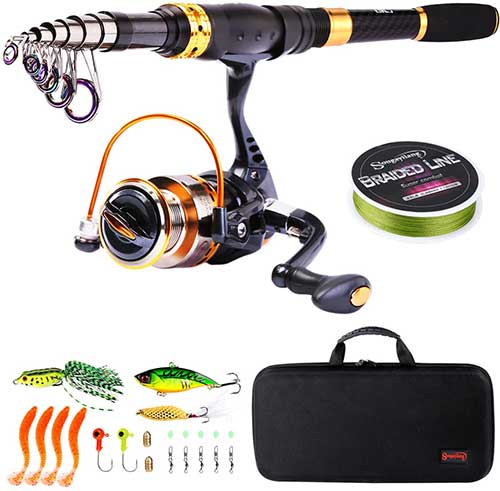
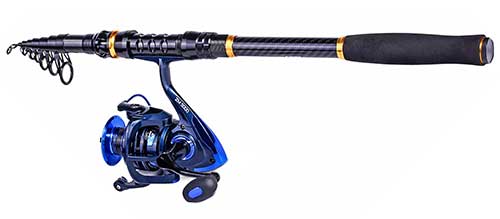

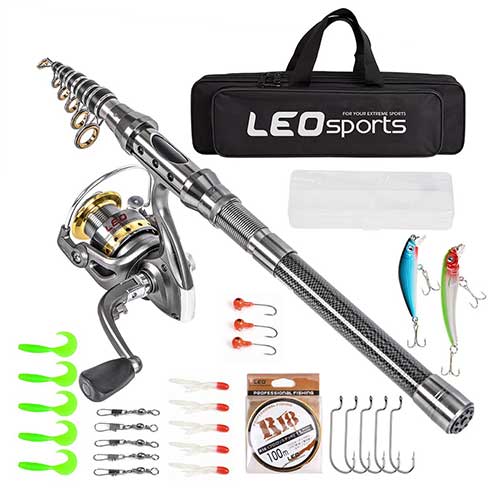
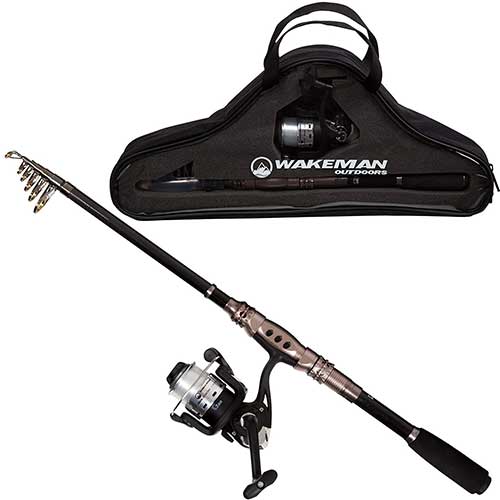
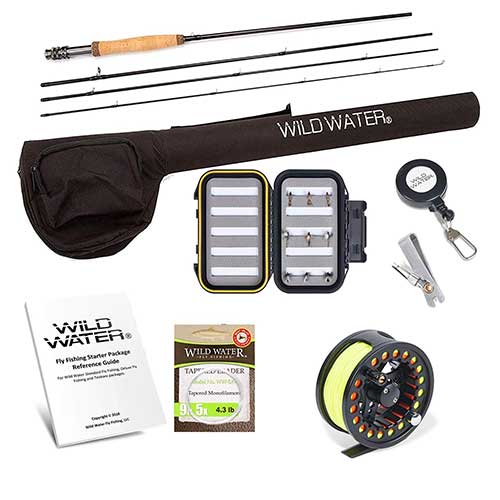

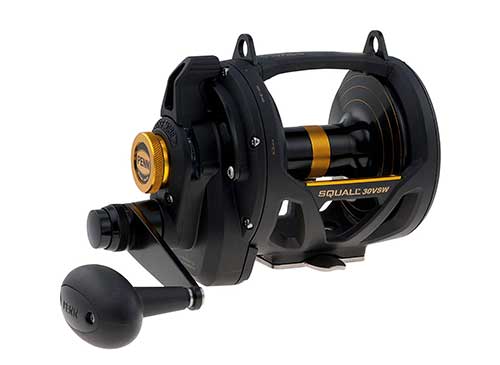

I have used telescopic rods since the 1960s and never had one brake. The best ones I have ever had came from Germany such as D.A.M. I only wish Shakespeare would make a telescopic Uglystik. You can’t brake an Ugly Stik.
Shimano eclipse 12 ft telescopic great rod handles snapper, kahawai, and stingrays. Whats your thoughts on this rod?
Hey Captain,
You should check out Daiwa’s new telescopic releases. They blow all of these out of the water. The Megaforce is now Daiwa’s entry-level telescopic, followed by the Ninja, the Blazon, and the B.B.B. or the Triple B, which range from $50-300. The Blazon and Triple B are available in most actions/speeds and baitcasting models are available too. I haven’t tried the BBB, but I’ve tried most of the telescopic rods on this list. While the Blackhawk has the floating guides and makes most of the others on this list look like toys. The Daiwa’s take that to the next level. The other Daiwa offerings all have the floating guides, and they have rubber washers, so they don’t wear the tip as much as the Blackhawk.